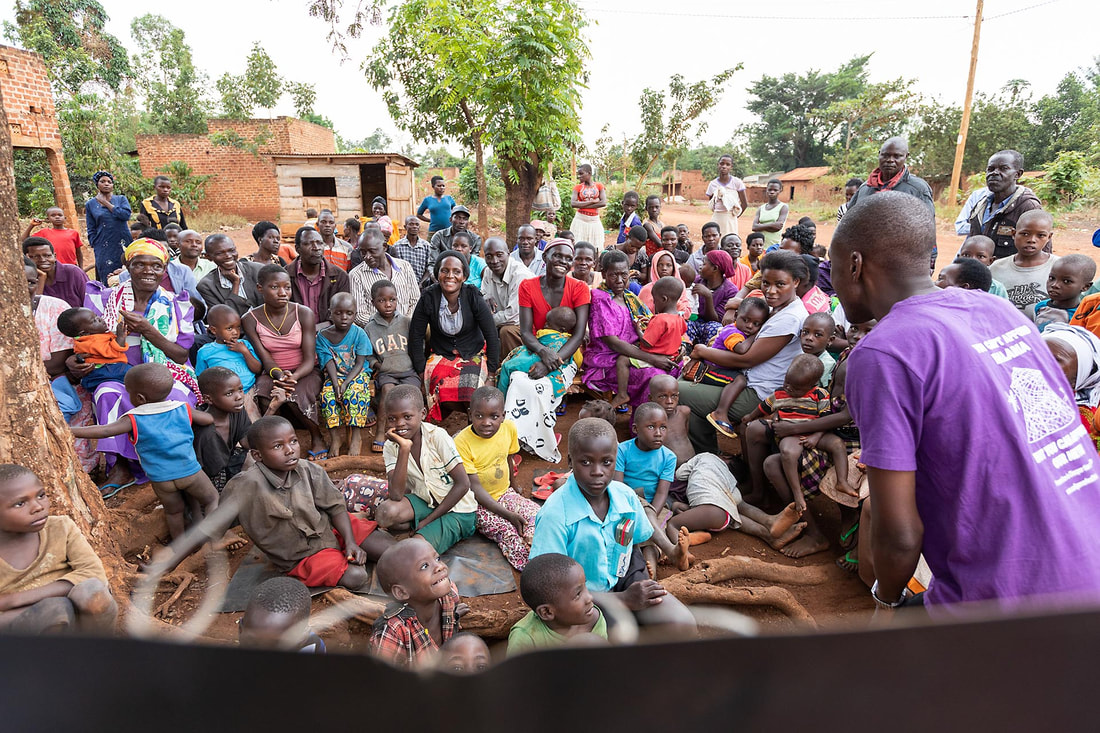Malnutrition Education
Malnutrition is a serious health problem in Uganda predominantly affecting children, immuno-compromised individuals, and people with disabilities. Like many health issues in Uganda, malnutrition is a disease directly related to poverty and lack of education. More than half the cases treated at the SPH clinic are for individuals suffering from severe malnutrition. The treatment interventions SPH provides are life-saving for these individuals.
In 2013, SPH launched an educational outreach program in the communities where the majority of our malnourished patients live. The program provides information about nutrition and malnutrition. Using photographic informational diagrams, nurses and local educators illustrate what malnutrition looks like along with the locally available components of nutritionally-balanced meals. A key educational component shows the common local foods in each food group and the necessity of including these foods in our diet. Other essential information related to combating malnutrition that is shared with these communities includes:
· How to prepare clean water for use in cooking and drinking.
· The importance of immunizing and deworming children against common and preventable diseases.
· Hygienic cooking techniques such as washing hands with soap and water before cooking and after using the bathroom.
Prior to every outreach program, a pre-education survey is administered to assess all participants’ baseline knowledge. The second part of the educational assessment comes several months after each outreach when our team returns to the villages administering a follow up survey to learn if people’s baseline level of knowledge about nutrition and malnutrition has changed.
Vaccination, deworming, prenatal vitamins and Vitamin A supplementation are distributed to needy community members at every malnutrition education outreach.
In 2013, SPH launched an educational outreach program in the communities where the majority of our malnourished patients live. The program provides information about nutrition and malnutrition. Using photographic informational diagrams, nurses and local educators illustrate what malnutrition looks like along with the locally available components of nutritionally-balanced meals. A key educational component shows the common local foods in each food group and the necessity of including these foods in our diet. Other essential information related to combating malnutrition that is shared with these communities includes:
· How to prepare clean water for use in cooking and drinking.
· The importance of immunizing and deworming children against common and preventable diseases.
· Hygienic cooking techniques such as washing hands with soap and water before cooking and after using the bathroom.
Prior to every outreach program, a pre-education survey is administered to assess all participants’ baseline knowledge. The second part of the educational assessment comes several months after each outreach when our team returns to the villages administering a follow up survey to learn if people’s baseline level of knowledge about nutrition and malnutrition has changed.
Vaccination, deworming, prenatal vitamins and Vitamin A supplementation are distributed to needy community members at every malnutrition education outreach.


